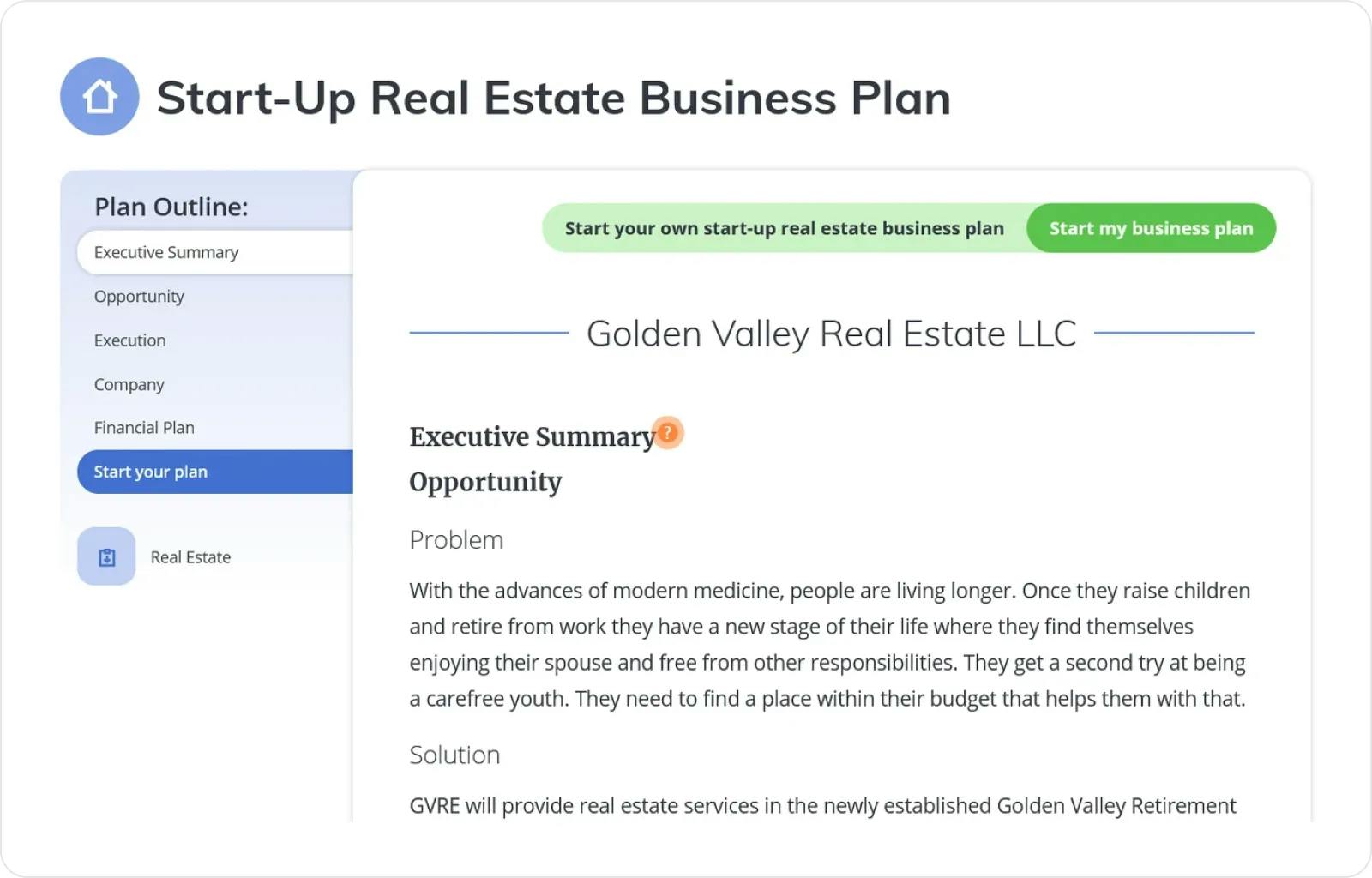Please note: This post contains affiliate links and we may receive a commission if you make a purchase using these links.
Table of Contents:
Writing a proper business plan can make your dream of starting a restaurant a reality. To ensure your restaurant thrives, your plan must include market research, location, financial analyses, employees, vendors, sales projections, and several additional components. Let's get cooking.
What Is a Business Plan for a Restaurant?
A business plan for a restaurant is a document that outlines your vision and goals. It can range in length from a few pages to over a dozen. You'll need to articulate the following key aspects to stakeholders (especially prospective investors who are looking to gain insight into your upcoming venture):
- Vision: Articulate what your visionary concept is for your restaurant. What motivated you to follow this dream? What makes it unique?
- Execution Strategy: How will you make your vision a reality? Clearly outline the step-by-step plans you intend to follow.
- Goals and Success Strategy: Define your short-term and long-term goals. What milestones are you aiming for?
- Operational Framework: How will your restaurant operate? Provide details on everything from management and staffing to vendors and suppliers.
- Competitive Edge: What will make your business stand out from the competition? What are your unique selling points? Is it the food? The ambiance? The type of service offered?
- Financial Projections: Present the estimated financial costs for running the business, as well as your ROI — Return on Investment.
Your business plan is intended to serve as a roadmap outlining what needs to be accomplished in order for your business to succeed.
Beyond serving as a pre-launch requirement, your business plan will also act as a guide during the early stages of development by giving you a sense of what needs to be accomplished and how to achieve your goals.
It’s also a good idea to regularly review your business plan and make any necessary adjustments in order to continue meeting your goals.
Benefits of Writing a Restaurant Business Plan
Starting a restaurant business, or any business for that matter, requires a number of decisions and steps in order to ensure all bases are covered. Having a business plan in place will help illustrate what you need to do, when you should do it, and why should do it.
The benefits of writing a business plan include:
- Establishing an overall path by centralizing your vision of the business
- Setting milestones and allowing you to envision your progress, think objectively about your business's trajectory, and make tweaks along the way
- Sharing your vision about the restaurant with others, especially investors who can provide funding
- Allowing for a general overview of the market you're in and the competition you'll face in your region
- Preparing for how much money the business will need in order to operate and how much profit it can potentially generate
It's safe to say that business owners are required to make a number of critical decisions. A business plan provides an opportunity to formulate a plan of action and establish a background to how these decisions will ultimately play out.
How to Write a Restaurant Business Plan
Starting the process of writing your restaurant business plan may be daunting at first, but there's no need to sweat it — we’re here to guide you. (Save the sweating for the kitchen.)
Below, you’ll find all the key components of your restaurant business plan and info on what should be included in each section:
Executive Summary
Here, it's essential to provide details about the type of establishment you plan to operate, such as a café, fine dining, fast food, or family-style, as well as the cuisine you'll specialize in, such as Greek, Mexican, French, Indian, or American.
Use the executive summary to cover:
- Restaurant type
- Business location
- Target market/customer
- Menu
- Financial projections
- Business structure
The last bullet point is critical if you want to attract investors or plan on taking out a loan. The financial projection should cover at least 36 months or as much as 60 months of the business's operating period.
Company Description
Take a few paragraphs to describe your business. What’s your mission statement? This is where you get to explain the purpose of your business. Why did you want to open a restaurant? How does your restaurant differ from the competition? These are the questions that your company description will help answer.
Your company description should also include:
- Business name
- Type of service (e.g., fine dining, buffet, takeout, catering, etc.)
- Goals
- Competitive advantages
- Projected opening day
Products and Services
What do you plan to sell? What type of menu will you offer? What are your hours of operation? Is there anything unique about your business? Are there any key points that stand out and should be shared with potential investors? (Hint: There should be.)
Market Analysis
Perhaps there are several 50s-style themed restaurants in your area that specialize in burgers and shakes, and you're thinking about joining the pack. Before you do, take a moment to consider: How strong is the demand?
Perhaps there's a different opportunity waiting in plain daylight — maybe people are looking for a vegan restaurant, especially considering that the nearest one is in the next town over.
In this section, you need to consider the viability of your restaurant by examining the target customer base and conducting a competitive analysis.
Your competitive analysis should:
- Identify the competition. Are there similar types of restaurants in your area offering a similar type of menu?
- Research the competition. Look at customer reviews, study their menu, and visit their site. You should also sample from their menu.
- Start a list. Put together a pro and con list comparing the competition to your business. Is there anything you can do to make your business stand out and provide you with a competitive edge?
Sales and Marketing
This is where some charts and graphs can help illustrate sales projections and goals. In addition, you should also include how you’ve researched the market. You should have a plan — also referred to as a “unique selling proposition” — that will bring crowds of hungry patrons to your door.
Use this section to highlight your advertising and marketing plans, which should include:
- Business website
- Social media strategy
- Branding and logo
The Management Plan
There are many moving pieces when it comes to the successful operation of a restaurant. The work is demanding and fast-paced, with minimal room for error. You'll need to have a good amount of communication and coordination between the staff, and a management plan helps define the intricate roles that give your customers a pleasant dining experience.
Your management plan should also help you coordinate between the different vendors and suppliers to determine how orders will be placed, how costs will be controlled, how the roles and responsibilities of the staff differ, and how employee schedules and coverage plans will work in case the restaurant finds itself short-staffed.
And let's not forget about acquiring the appropriate licenses and permits for your business.
Financial Projections
Here’s another opportunity to break up the text by adding some more graphs and charts. This section will cover detailed estimates of the business’s revenue and expenses and also provide a snapshot of how the restaurant is projected to do over the next 24, 48, or 60 months. This will help track the business’s progress and allow you to course-correct if necessary.
The finance portion of your business plan is aimed at attracting financial support from potential investors and creating access to cash through bank loans.
Appendix
Although you may have photos interspersed throughout the different sections of your restaurant plan, you can also include an appendix with supporting documentation and data that you couldn’t find a place for in the main sections of your business plan.
This data may include:
- Biographies of staff and notable information, including education, training, or any honors or awards received
- Additional financial information and analysis charts, graphs, materials
- Floor plans
- Menus
- Organizational charts
- Customer feedback/testimonials and news stories
- Relevant legal documents, including licenses and permits, vendor agreements, and leases
FAQs About Writing Your Restaurant Business Plan
As you get deeper into creating your restaurant business plan, several questions may come up. We've got answers.
How Many Pages Should a Restaurant Business Plan Be?
As long as all the information is included in your business plan and the material is clear, concise, and error-free, a business plan can range between a handful of pages to enough material that you may be required to bind it all into a small booklet.
However, it’s important to keep in mind that you’re not trying to sell a novel to your potential investors but rather a document that will quickly catch their attention and excite them about the opportunity you're providing.
How Do I Write a Restaurant Business Plan for the First Time?
First off, take into account everything mentioned above about what to include in your business plan. Make sure that the information that you provide is concise and organized in easy digestible paragraphs. The key here is to include all the important information. You’ll also need to make sure that the information you provide is accurate and error-free. Make sure to proofread your business plan thoroughly and run it through a proofreading app.
How Do I Write a Business Plan for a Restaurant Sample?
Looking for a sample of a restaurant business plan? You're in luck — there are several places where you can find business plan templates that can set your business up for success.

With so many specific details to cover, it's crucial to use an all-encompassing outline. Look at a few examples to help get the gears turning.
Start Working on Your Restaurant Business Plan
The key to getting your business started is building a solid restaurant business plan. Now that you understand why it’s so important to have one, let’s create a business plan specific to your goals and dreams of operating a restaurant. Try Bizee’s Business Plan Template, which provides an outline of everything you need to get started.

Peter Mavrikis
Peter Mavrikis is an author and editor with over 25 years of experience in publishing. He has worked as the Editorial Director for Barron’s Educational Series, as well as Kaplan Test Prep, where he ran the test prep, foreign language, and study guide.

like what you’re reading?
Get Fresh Monthly Tips to Start & Grow Your LLC









